Vanillaware’s latest game Unicorn Overlord arrives tomorrow. The embargo is up, and by now, sites are already posting thoughts and takes on the latest from the studio behind Dragon’s Crown, Odin Sphere, 13 Sentinels, and many other well-loved games.
And as I’ve written about previously, Unicorn Overlord takes an interesting approach. It’s looking back on the strategy stylings of classics like Ogre Battle, utilizing real-time strategy and an overworld map, setting it apart from other recent throwback tactics projects. Units move and fight in automated conflict using logical progression that you’ve set up ahead of time, similar to the Gambit system from Final Fantasy XII.
In the 20 hours I’ve played of Unicorn Overlord thus far, I’ve been fairly enthralled. It’s a breath of fresh air in the strategy and tactics RPG genre, and feels like Vanillaware both broadcasts its strengths (art, music, design, delicious-looking food) and breaks some new ground in tapping into the past.
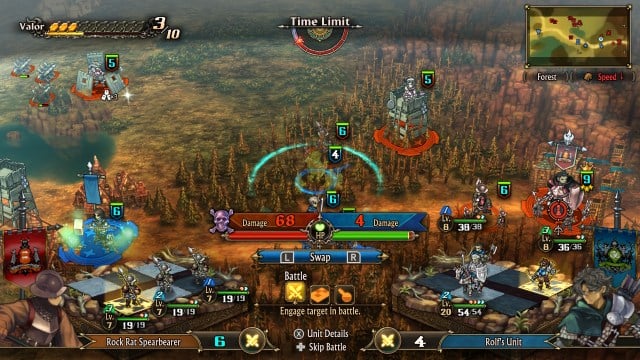
So, ahead of the launch, I sent a few questions over to the Vanillaware staff, to ask about their process. Why did they choose to go this route? What was the development process like? And what’s up with the card game in the collector’s edition? We got back some answers from Vanillaware’s lead game designer Wataru Nakanishi and game director Takafumi Noma, as well as Atlus producer Akiyasu Yamamoto, to learn about all that and more.
With Unicorn Overlord, there are reports indicating it was in development for 10 years. What was that like, and
was development ever influenced by other projects the studio worked on throughout the decade?
Wataru Nakanishi, Lead Game Designer: Although it was a very long-term project, I did not work on it for the entire 10 years, but rather participated in the development of other projects in between, such as Odin Sphere Leifthrasir and Dragon’s Crown Pro.
One project that had a direct influence on me was 13 Sentinels: Aegis Rim, which I was developing at the same time. When designing the Valor Skills for Unicorn Overlord, we incorporated elements of the meta skills system used in that title as an example.
How did you decide on the scenario and setting for Unicorn Overlord? Did the setting idea come before
deciding on making a strategy game, or vice versa?
Takafumi Noma, Game Director: We set out to make a tactical RPG first and foremost. The general framework for the world, like its setting, and world map were developed next. It wasn’t until the later stages of development that we created the story and detailed characters.
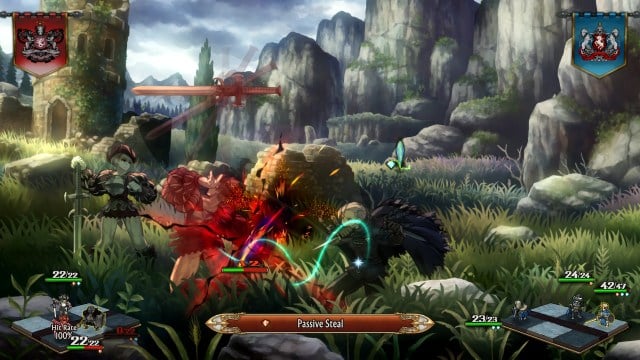
The combat system of Unicorn Overlord is very intriguing, in the way it asks players to establish logic and priorities for what units will automatically do in battles. Why did you opt for this, over having direct command inputs for each unit?
Nakanishi: We wanted the focus of the game to be on troop building and the importance of preparing for battle. It would probably be overwhelming to have to give direct commands to all the units marching at the same time (laughing). The battle system itself was a result of our pursuit of combining strategy and ease of understanding.
Akiyasu Yamamoto, Producer: The project was proposed initially to ATLUS as a Tactical RPG with network elements which remained at the core of the game throughout development. The result is a unique Tactical RPG, offering a deckbuilding like experience that, even among Vanillaware, could only be brought to life by the minds of Noma-san and Nakanishi-san.
Why did you choose to forego tiles, and instead use a field map? How did that affect the way you think about
the world and battle maps?
Yamamoto: Perhaps you mean to point out that this type of game is not so common to see from a Japanese studio? As you’re probably aware, the strategy (tactical) RPG market here is quite different from that in the west. For example, the RTS genre has never really caught on here like it has with the numerous PC titles, indie titles, and more. But to return to your question, Unicorn Overlord does indeed stray from the “mainstream” Japanese SRPG tile-based system. To put it simply, the creators of UO had a true passion for the ’90s tactical RPGs they played growing up, and wanted to create a new game system based on their experience with said games. If one were to draw a family tree of the evolution of gaming, I think you would find Unicorn Overlord would naturally sprout out from the same branch formed by those tiles which influenced it.
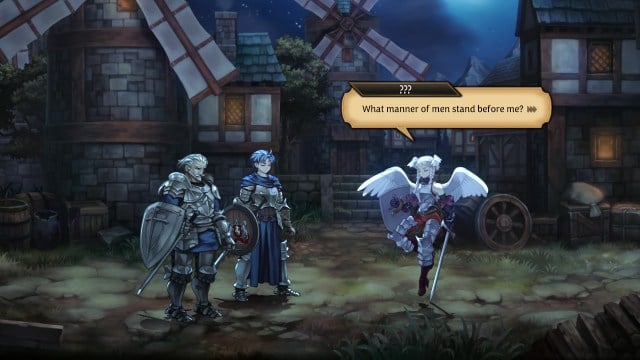
How did you go about creating some of the factions you interact with in Unicorn Overlord, like the elves and
angels? Were there any favorite factions to work on, amongst the team?
Noma: Since the guiding motif was 90’s fantasy, I thought I couldn’t leave out the elf. Initially I was thinking of using elves and dwarves which were common to Japanese TRPGs from that era, but after researching the original Norse mythology, we decided to stick to elves and dark elves instead.
Regarding the angel, although the original setting itself was abandoned during the production process, the design remained, and I think it ended up being put to good use. I think each staff member likely has their favorites, but I personally like all races, so I don’t have a favorite faction.
Unicorn Overlord is heading to PlayStation, Xbox Series consoles, and Switch, but not to PC – is there any reason in particular you chose not to aim for PC at launch? Has there been any discussion about a PC port later on?
Yamamoto: As a publisher, we would like to deliver it to PC users as well, but per our agreement with Vanillaware, we are only releasing on console. In other words, there are no plans to port it to PC currently.
There’s been a resurgence in tactics games lately – including games like Triangle Strategy, the Tactics Ogre remaster, and even Mario + Rabbids. What do you think of this, and how do you think Unicorn Overlord stands out from other games of this style?
Nakanishi: As an SRPG fan, I am very pleased. Not only completely new titles, but also remasters of old titles are essential for the survival of the SRPG genre. I for one am very thankful for the recent trend of many SRPG titles being released.
This title, which was created in the midst of all these masterpieces, is full of unique elements such as field parts and battle systems. I believe that both fans of SRPGs of the past and those who have never played SRPGs before will enjoy this title.
Yamamoto: Going back to your previous question, the market for “tile-based” SRPGs has been well explored by major developers and historical IPs for decades. What really drew ATLUS to Vanillaware’s proposal for Unicorn Overlord was how it was a blue ocean opportunity that avoided the red ocean of tile based SRPG. We ourselves had played many tactics games in the 16-bit era of the 1990s and were moved by the proposal from Noma-san and Nakanishi-san, which led to the development of this title.
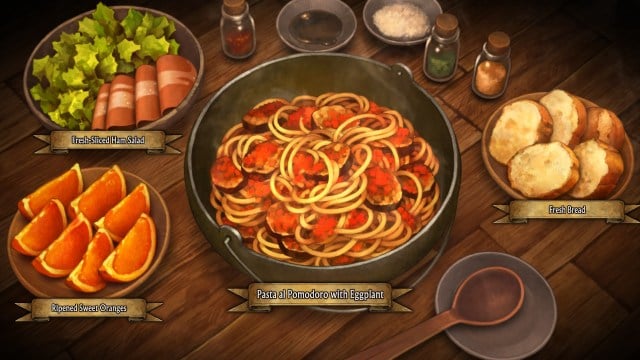
Vanillaware is well-known for its art style, especially its food. How did you decide on what kinds of food to have
in Unicorn Overlord, and does it vary by in-game region? Did you ever make any of the recipes yourselves?
Noma: At first, we wanted to be realistic and envisioned a scene of soldiers sitting around a campfire and eating porridge as their rations. However, we also wanted the food to look delicious to boost morale, so we asked Shigatake-san, who has done cooking animations for our past productions, to do the cooking animation again for this game.
We asked Shigatake-san to choose the types of dishes himself. He chose dishes that looked delicious and made us want to eat them, while emphasizing visual differentiation. The dishes that can be eaten differ depending on the region in the game, so we hope that you will look forward to that as well in your adventures. Unfortunately, I have never actually made any of the in-game recipes myself… (chuckles).
13 Sentinels had a fairly winding story with multiple viewpoints, while Unicorn Overlord looks to follow one narrative thread through the prince Alain. How did that shift your way of thinking about the story of this game, and what would you say the defining characteristics of Unicorn Overlord’s narrative are?
Yamamoto: First, I’d like to point out that although both are developed by Vanillaware, the director of both titles is different. Where 13 Sentinels came about as Kamitani-san’s vision of an adventure game, the genesis for Unicorn Overlord was rooted in Noma-san’s passion for the elements from the SRPGs from the ’90s that left an impression on him. Things like giving as much gravity to the emotional connection with the characters involved as their actual battlefield functions and performance. Therefore, this work explores the story of the more than 60 unique characters and their motivations for joining the liberation army. It highlights how even the seemingly weak can bring change to the world by raising their voices and working together against tyranny and injustice. To me, that’s the real message of this story.
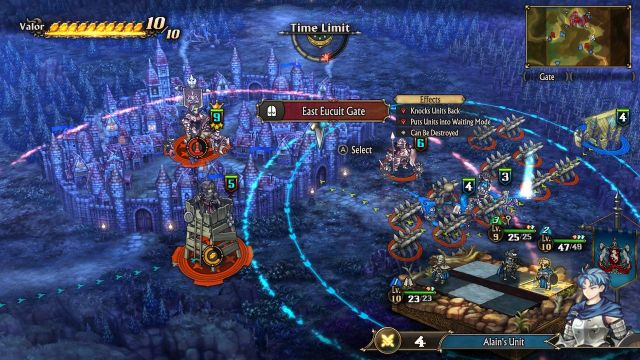
I’m really interested in the card game that’s included in the collector’s edition of Unicorn Overlord. How did that
come about, and was this something the development team worked on themselves?
Yamamoto: It came about when our publisher, ATLUS, asked Vanillaware if it would be possible to create a deluxe version for users who wanted to continue to enjoy the Unicorn Overlord world outside of the main game. As for accessories, it would be difficult to use something metal for logistical reasons, so we requested a paper one, and the idea we struck upon was a card game. It was the first time for ATLUS to make such an accessory, but we were able to make it a reality by consulting with a long established company that handles card games and other physical games in Japan.
The reason for the extensive size is because the main game itself was created by staff who enjoy deck building and thinking-type card games. The accompanying card game was designed by Mr. Maeda who is a graphic designer at Vanillaware. Please note that although the setting and character classes are shared with the main game, each can be played independently, and this does not mean that you cannot fully enjoy the main game without playing the card game.
Unicorn Overlord is out for Nintendo Switch, PlayStation 4 and 5, and Xbox Series X|S on March 8, 2024.

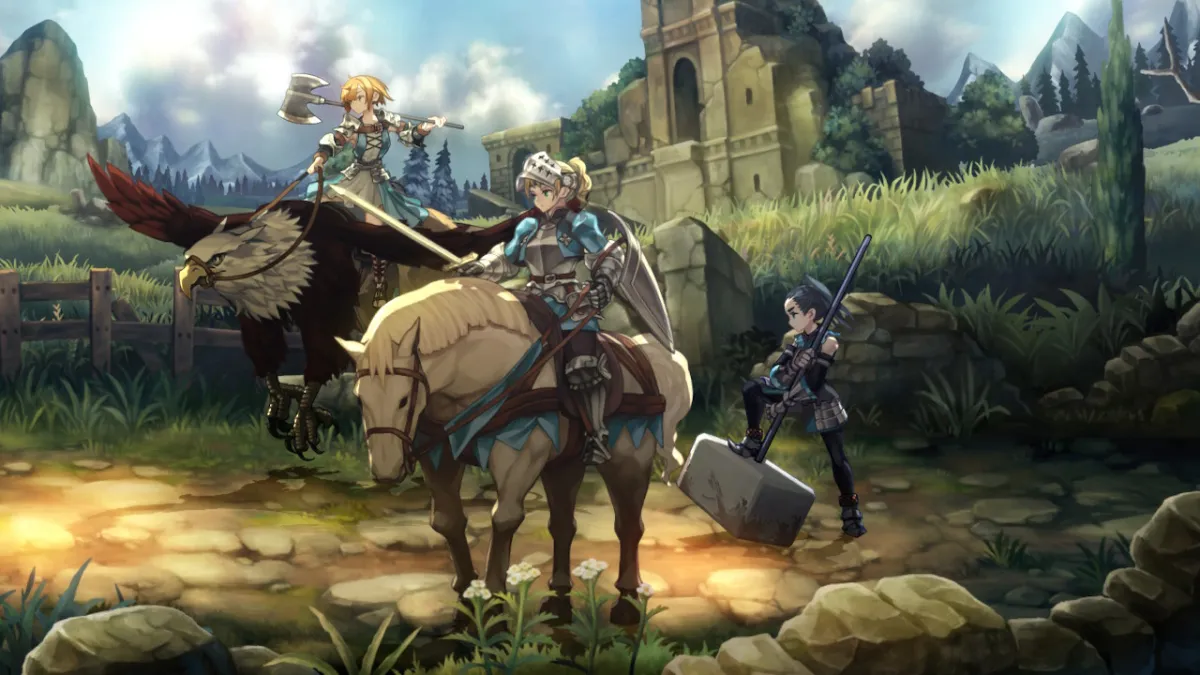



Published: Mar 7, 2024 12:00 pm